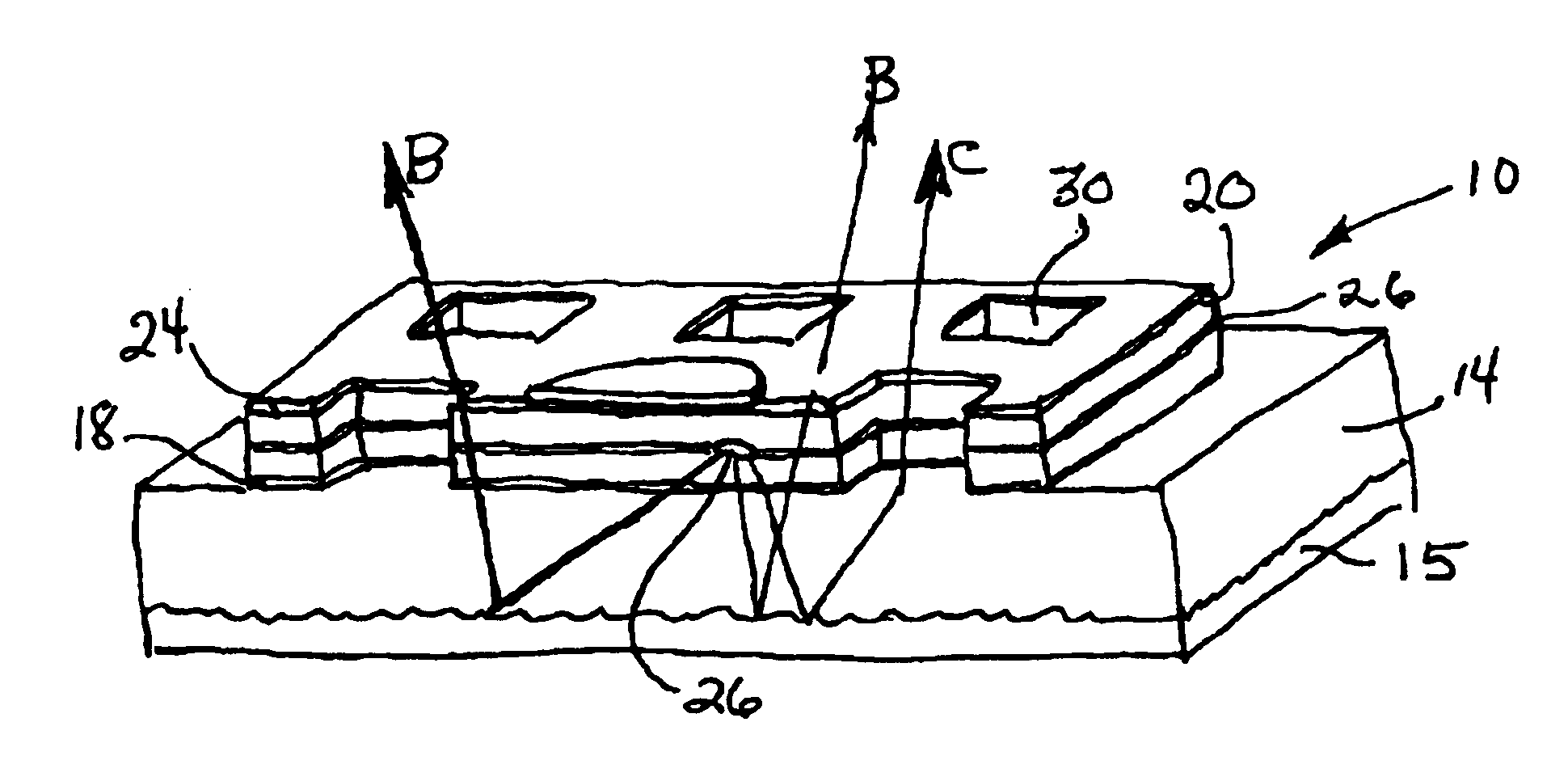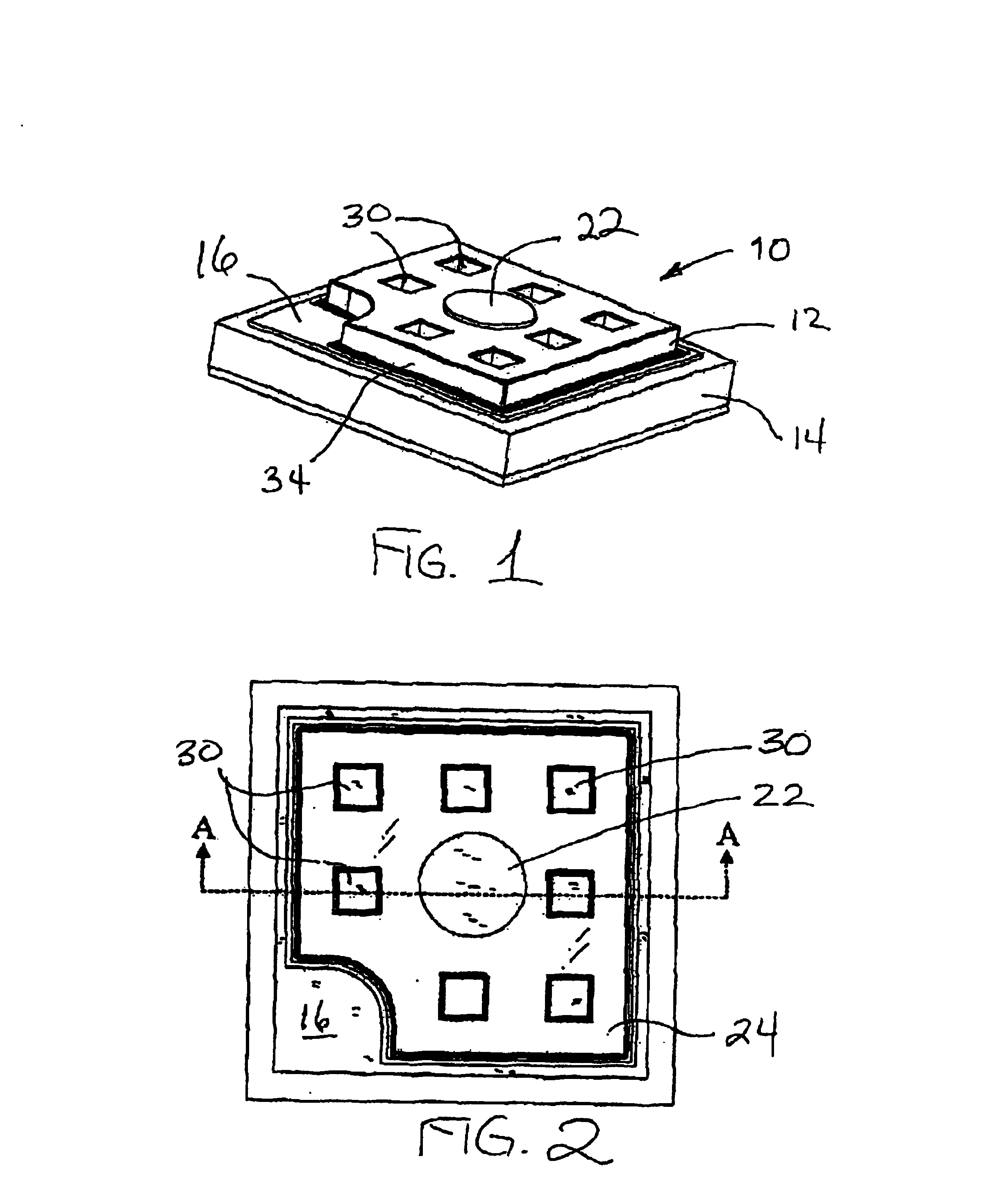Light emitting diode having multiple pits
a light-emitting diode and multiple-pit technology, applied in semiconductor/solid-state device manufacturing, semiconductor devices, electrical apparatus, etc., can solve the problems of increased leakage current, lower overall extraction efficiency, and increased price of superior device stability, so as to improve extraction efficiency, reduce the mean distance to a sidewall, and increase the extraction efficiency of light
- Summary
- Abstract
- Description
- Claims
- Application Information
AI Technical Summary
Benefits of technology
Problems solved by technology
Method used
Image
Examples
Embodiment Construction
[0018]As is the case with many conventional LEDs, a device of the invention 10 may be formed as a die or mesa 12 extending between two parallel surfaces that, for the purpose of providing the reader with convenient reference to the drawing are referred to as a ‘top’ and ‘bottom’, although the reader will recognize that the LED can be operated in any selected orientation and that the words “top” and “bottom” are used throughout this disclosure to refer to the surface having a semitransparent electrode disposed on it and the surface attached to a substrate, respectively. This die is disposed on a suitable substrate 14 that is preferably transparent and has a reflective bottom surface layer 15 disposed on the surface opposite to the substrate surface to which the die 12 is attached. Electrical contact to the bottom of the mesa 12 is made by lower metallic contact 16 disposed on a heavily doped, low resistivity, semiconductor layer 18. A second electrical contact 20 at the top of the me...
PUM
 Login to View More
Login to View More Abstract
Description
Claims
Application Information
 Login to View More
Login to View More - R&D
- Intellectual Property
- Life Sciences
- Materials
- Tech Scout
- Unparalleled Data Quality
- Higher Quality Content
- 60% Fewer Hallucinations
Browse by: Latest US Patents, China's latest patents, Technical Efficacy Thesaurus, Application Domain, Technology Topic, Popular Technical Reports.
© 2025 PatSnap. All rights reserved.Legal|Privacy policy|Modern Slavery Act Transparency Statement|Sitemap|About US| Contact US: help@patsnap.com



